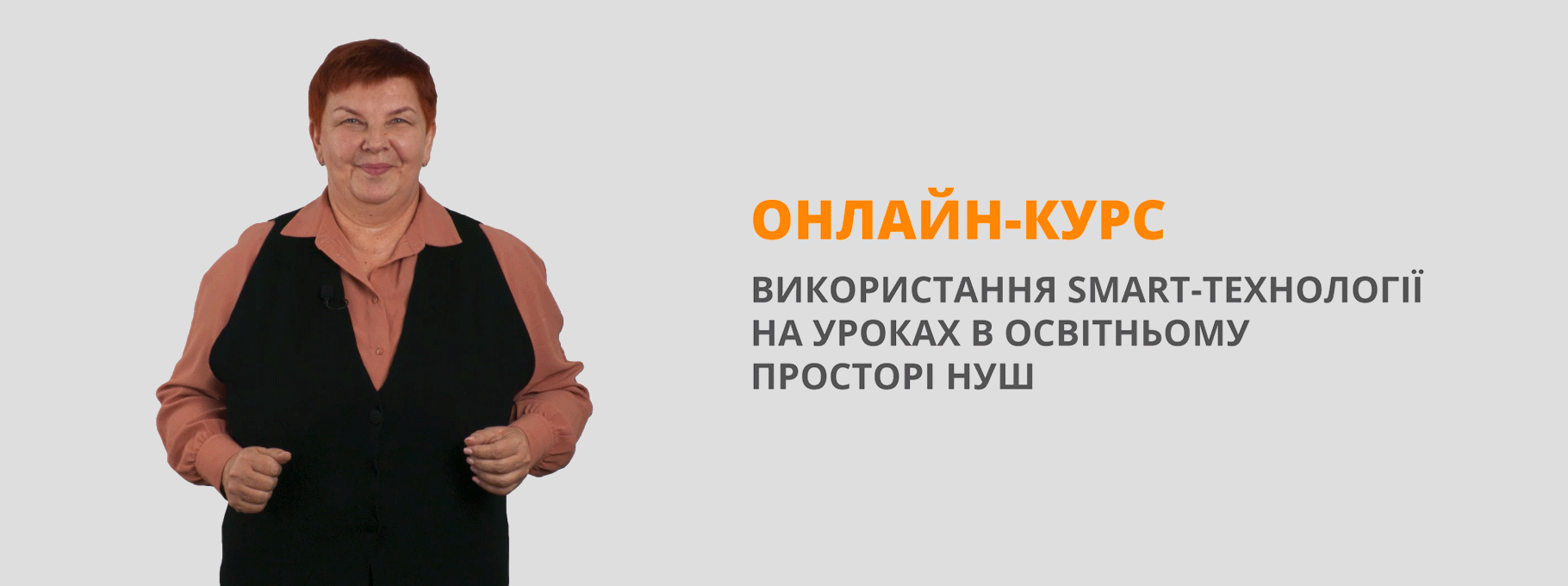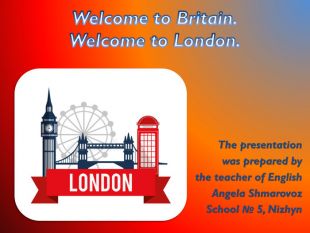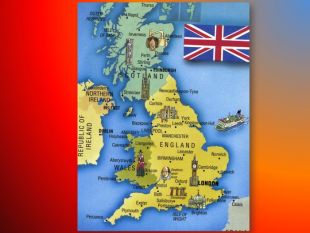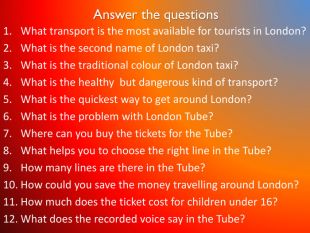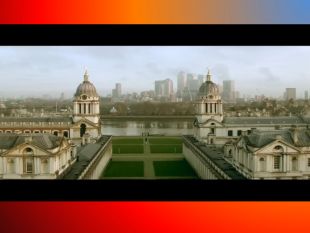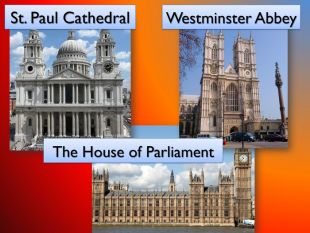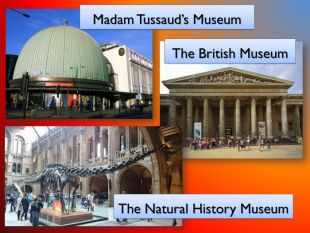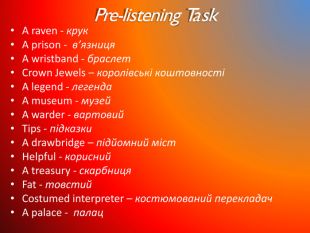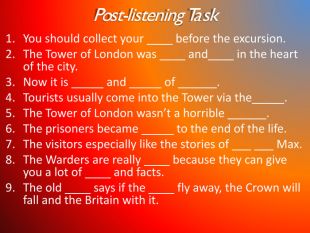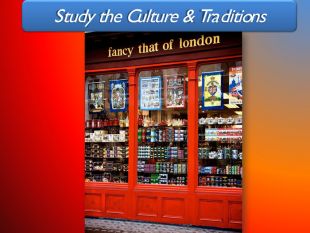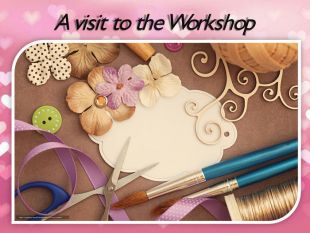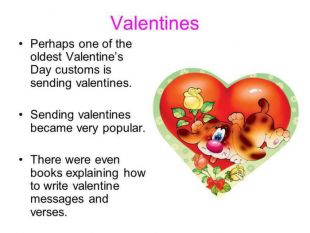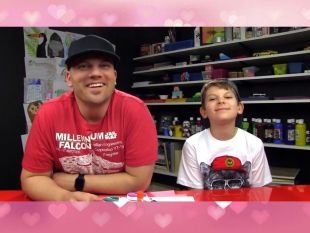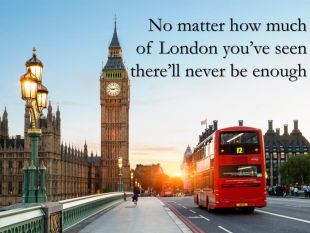Інтегрований урок "Запрошуємо до Британії. Запрошуємо до Лондону".
Інтегрований урок - англійська мова/трудове навчання з підготовленою презентацією на тему "Формування соціокультурної компетенції на уроці англійської мови"
Конспект інтегрованого уроку з англійської мови та трудового навчання для 6-го класу
Тема: Завітайте до Великобританії.
Завітайте до Лондону.
Підготувала:
вчитель англійської мови
Шмаровоз Анжела Миколаївна
ЗОШ №5 м.Ніжин
Чернігівська область
Ніжин 2018
Topic “ Welcome to Great Britain.
Welcome to London”
Objectives:
- to revise and enrich students’ vocabulary on the topic;
- to improve students’ listening, reading,writing and speaking skills;
- to train students’ habits in group work;
- to encourage students’ interest in history, culture and traditions of Great Britain;
- to cultivate students’ aesthetic tastes, awareness and respect to the world culture;
- to enhance students’ cognitive abilities and memory.
- to learn students to make a valentine present.
Equipment: presentation, a video “Top 10 London Attractions”, a video about Tower of London, a video ‘London Trasport’, a map of Great Britain, video “ Easy Valentine Card”, handouts, coloured paper, glue and scissors. ( The video films are taken from YouTube).
By the end of the lesson students are:
- To use words and word-combinations, revised grammar structures when speaking on the topic;
- To identify the main idea and details from the texts for reading and audition;
- Work in groups.
- Made some presents for St.Valentines Day.
Procedure
I. Introduction
T: Good morning, dear children! I am glad to see you! I hope everyone is feeling fit. I think you will agree that the topic we are going to speak on is really worth discussing. Because we can’t imagine our life without travelling.
Do you like to travel?
What kinds of travelling do you know? ( Pupils answer the questions)
So, the topic of our lesson is “Welcome to Great Britain.Welcome to London”.
Let’s start our travelling (Slide 1)
ІІ. Warming-up Activity. (Slide 2)
Look at the map of Great Britain and tell what you know about it.
The students tell about the geographical points of Great Britain.
P1: The United Kingdom of Great Britain and Northern Ireland is situated on the British Isles. The British Isles lie to the north-west of Europe. The biggest of them are the islands Great Britain and Northern Ireland. The British Isles are washed by the Atlantic Ocean, the North Sea, the Irish Sea and the British Channel.
P2: Great Britain consists of three parts: England, Wales and Scotland. Scotland is situated in the north of Great Britain, Wales – in the south-west, England – in the south–east. Northern Ireland is situated in the north of Ireland.
P3: The capital of Great Britain and England is London. It is situated on the Thames River. The people are the English. Their native language is English.
P4: The capital of Wales is Cardiff. The people are the Welsh. They speak Welsh.
P5: The Capital of Scotland is Edinburgh. The people are the Scotts. They speak Scottish.
P6: The capital of Northern Ireland is Belfast. The people are the Irish. They speak Irish.
P7: The surface of England and Northern Ireland is flat. The surface of Wales and Scotland is mountainous. The mountains are not very high in Great Britain. The highest mount is Ben Nevis in Scotland.
P8: Scotland is famous as the land of lakes too. They are called lochs. The most beautiful lake is Loch Lomond.
P9: The rivers in Great Britain are not very long but they are rather deep. The biggest river is the Severn.
P10: Thanks to Gulf-Stream the climate of Great Britain is mild. Summer is not very hot and winter is not very cold here.
P11: The largest industrial cities of Great Britain are Liverpool, Leeds, Sheffield, Manchester, Birmingham. The biggest sea ports are Portsmouth, Plymouth.
The most beautiful – royal Bristol.
P12: Stratford-upon-Avon is the birthplace of famous Shakespeare.
More than 63 million people live in Britain.
III. Reading. Our next destination point is London. How are you going to get around this enourmos city?
Let’s check your hometask. Prepare the texts, then listen and read. (Pupils watch the film “ Transport in London”, and read the text) (Slide 3)

And now answer the questions on the text. (Slide 4)
1.What transport is the most available for tourists in London?
2 What is the second name of London’s taxi?
3.What is the traditional colour of London’s taxi?
4. What is the healthy but dangerous kind of travelling?
5. What is the quickest way of getting around London?
6. What’s the problem of travelling by Underground?
7. Where should you buy the tickets for the Tube?
8. What helps you to choose the right line in the Tube?
9. How many lines are there in the Tube?
10. In what way can you save the money travelling around London?
11. How much does the Tube ticket cost for children under 16?
12. What warning can you hear in the Tube?
( Children read and answer the questions on the text)
IV. Speaking. Group Work.
You know that each country has its traditions and customs; its history and culture. In 2015 London was named the world’s most travel destination … for the fifth time in seven years! Today we’ll visit London and try to organize a sighseeing tour around this amazing city. ( Video about Top 10 London’s Attractions) (Slide 5)
Let’s keep our tour around London.Today you will be the guides.Split into groups, please. Take these cards and prepare a tour.
The task for the group number 1. (Slide 6)
The task for the group number 2. (Slide 7)
The task for the group number 3. (Slide 8)
The task for the group number 4. (Slide 9)
(Children prepare the stories about the London’s sightseeings and present them before the class.)
- Tower Bridge is in London. It’s a busy and vital crossing of the Thames River. It is the only Thames Bridges which opens.You can have a nice walk along it.You can also enjoy the view of the city from it.
- Big Ben is the name of the clock in the clock tower of the Houses of Parliament. It weights more than 14 tons. It is a famous symbol of London.
- Westminster Abbey is a royal church. It is more than 900 years old. It is situated not far from the Houses of Parliament. All the kings and queens of Britain were buried there. One of the treasures of the Abbey is the ancient Coronation Chair.
- St.Paul’s Cathedrale is the most famous of all English architecture. It was designed by Sir Christopher Wren. It has the second largest ring of bells in the world, Inside the Cathedrale you can see many monuments to generals and admirals. The Cathedrale is famous for its Whispering Gallery.
- Buckingham Palace is the official London Residence of the Queeen and her family. The palace is like a small town with a police station, two post offices, a hospital, two sports clubs, a cinema and a swimming pool. When the Queen is in her resident the flag is up.
- Madam Tussaud’s is an exhibition of hundreds of lifesize wax models of famous people of yesterday and today. The collection was started by Madam Tussaud in the 18th century. You can see here many models of outstanding politicians, film-stars, singers, writers and footballers.
- The British Museum is the largest and the richest museum in the world. It contains one of the world’s richest collections of antiquities and the British National Library.As for me, Egyptan Mummies are the most interesting!
- The Houses of Parliament is a meeting place of two legislative bodies, the House of Commons and the House of Lords.There are over 1000 rooms and over 3 km of corridors.Its official name is the New Palace of Westminster.
- The London Eye is an extremely large Ferris Wheel on the bank of the River Thames. It is considered to be one of the most popular attraction in the UK.
It has got 32 capsules. Every capsule can hold up to 25 people. The London Eye allows tourists to enjoy an amasing London cityscape.
- If you are on holiday in London – travel by bus. London buses are called double-deckers. They are very popular with the tourists, especially open-top buses, but only when the weather isn’t rainy!
- When you are in London, you can get to most places very quickly by Underground. It is the first underground in the world. Londoners call it the Tube.
- The Natural History Museum is a very popular place in London.It has got 5 departments. The central hall houses an exhibition of dinosaurs.Also there is a full-scale model of the blue whale, 27 meters long.
V. Listening
Pre- listening task:
T: Thank you very much for your interesting stories. But let’s come back to the Tower of London and have an excursion there. (Slide 10)
Please, have a look at these words:
(Slide 11)
a fortress
a prison
a wristband
Crown Jewels
a legend
a raven
a museum
a warder
tips
a drawbridge
helpful
a treasuary
fat
costumed
a palace
interpriter
Pupils repeat the words after the teacher.
While-listening Task: Watch an episode and try to identify these words in the film. ( Slide 12)
Post – listening Task: Fill in the gaps in the sentences with the words above.Use the words in the correct form. One word isn’t used. (Slide 13)
- You should collect your _________ before the excursion.
- The Tower of London was ________ and ____________in the heart of the city.
- Now it is _______________ and _______________ of ________________.
- Tourists usually come into the Tower via the _______________.
- The Tower of London wasn’t a horrible _____________.
- The prisoners became __________to the end of the life.
- The visitors especially like the stories of______ ________ Max.
- The Warders are really __________ because they can give you a lot of _______ and facts.
- The old __________says if the ___________ fly away, the Crown will fall and the Britain with it.
The teacher check and correct the pupils answers. (Slide 14)
VI. Study the Culture & Traditions of British. A Visit to the Workshop
Let’s continue our trip around London. It will be finished at this place. (Slide 15)
- Guess what are we going to do here?
-What holiday do people celebrate in February in Great Britain?
( Pupils comment the picture of a holiday.) ( Slide 16)
( Slide 17) Imagine yourself at the workshop and try to remember all the steps of making the Valentine Card. Be attentive, please. (video about making the card) (Slide 18)
All the pupils are given with the glue sticks, sheets of coloured paper, scissors and heart models.
Pupils make the valentine cards.
Presentation. Students make the presentation of their Valentine Cards.
Thank you so much for your activity. I hope you’ve enjoyed our sightseeing tour.
I’d like to finish our lesson with the words of Samuel Johnson: ( Slide 19)
No matter how much of London you’ve seen there’ll never be enough.
Samuel Johnson
VII. Hometask. Surf the Internet and prepare the projects about the London popular places which weren’t mentioned today.
1

про публікацію авторської розробки
Додати розробку
